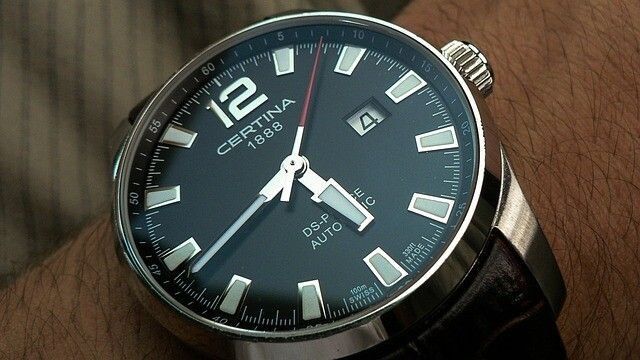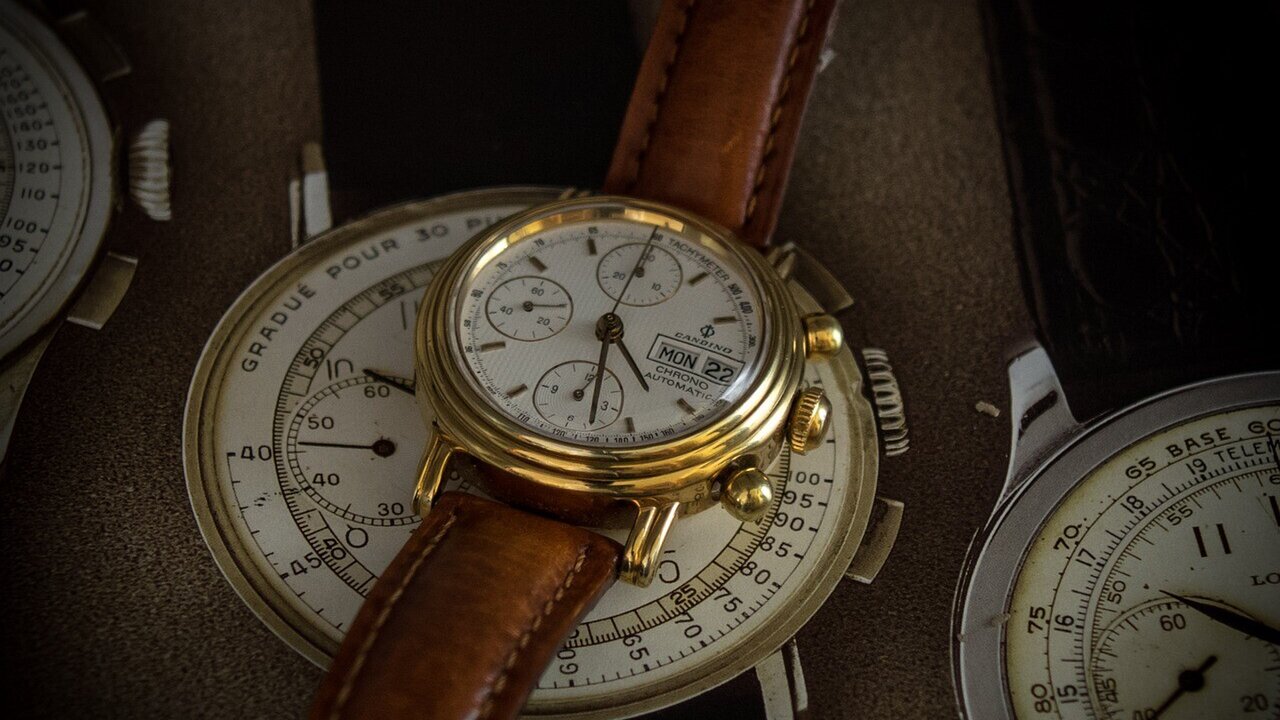Get the Lowdown on Watches in Australia
Whether for convenience, fashion, or status, many people still like to wear a watch in Australia. Although a mobile phone tells the time, it isn't as convenient or "individual" as a watch. On this page, we provide general advice for buying a watch in Australia - one you can hopefully cherish.

Watch Movements Available in Australia
The movement inside a watch is the “engine” that makes it tick or function. Currently, there are five basic watch movement options available in Australia.*
Quartz – powered by a battery.
Electronic (Smartwatch) – powered by a battery.
Solar – powered by the sun (stores energy in a rechargeable battery or capacitor).
Automatic – powered by the movement of the wearer’s wrist.
Mechanical – powered by hand-winding.
* For the sake of simplicity, we haven’t counted Seiko’s Kinetic and Spring Drive movements, which combine mechanical and quartz engineering. Both watch movements aren’t commonly found in Australia.

Popular Watch Types and Styles in Australia
In terms of appearance, watches are either analogue (traditional clock face), digital, or hybrid (a mix of analogue and digital). Popular watch types and styles in Australia are described below.
Dress watches – designed to be worn with formal clothing.
Casual / sports watches – suitable for casual and everyday use.
Dive watches – designed for swimming and diving (are usually ISO 6425 certified).
Chronographs – ideal for timing sporting events and general tasks.
Smartwatches – designed to link with smartphones.
Fitness watches – designed to track physical performance and monitor health signs.
Hiking / trekking / adventure watches – equipped with functions for the outdoors, such as altimeters, barometers, compasses, and thermometers.
Be aware that watch types and styles can easily overlap. For example, the Casio G-Shock Frogman MRG-BF1000R is a proper dive watch with smartphone connectivity and a chronograph (stopwatch).
Buying a Traditional Watch in Australia – Things to Consider
Quick Note: this section doesn’t consider smartwatches, as consumers typically align themselves with their smartphone brand (usually Apple or Samsung).
A quality traditional watch in Australia is the sum of its parts. Despite the marketing hype, most watch brands buy components from the same manufacturers and factories in Switzerland, Japan, China, Hong Kong, and Thailand. Once you know this, buying a quality watch at a sensible price becomes easier.
Watch Movement
Most of the mainstream watch movements in the world are made by Seiko, Casio, Miyota (Citizen), ETA (part of The Swatch Group), Ronda (Swiss), Seagull (Chinese), and Sellita (Swiss). These movement manufacturers are renowned for their reliability and cost-effectiveness in most cases. Other reputable mainstream movement manufacturers include STP (Swiss), Soprod (Citizen), La Joux-Perret (Citizen), and ISA (Swiss).
Tip: Look for a watch with a movement from one of the above manufacturers (if necessary, search Google to find the information).
Glass / Crystal
Sapphire glass is harder (hence more scratch-resistant) than mineral glass and smartphone glass (Corning Gorilla, Dragontrail). Expect to pay an additional $50 – $150 for sapphire glass. Interestingly, some serious divers prefer mineral glass on their watches, as it’s less likely to shatter on heavy impact.
Tip: For everyday use, sapphire glass is best for scratch resistance.
Watch Case
Most mainstream watch cases found in Australia are made from 316L stainless steel or heavy plastic / resin (both are cost-effective materials). Brass, bronze, titanium, and 304L stainless steel watch cases are less common in Australia. Rolex is renowned for its 904L stainless steel watch cases, which are highly resistant to corrosion but priced accordingly.
Tip: For overall value and durability, it’s hard to beat 316L stainless steel. However, Casio’s G-Shock watch cases (usually made from heavy plastic / resin) enjoy legendary status.
Lug Width
Lug width refers to the distance between the two case lugs (on the same side) that secure the strap or bracelet. Most lug widths are either 18mm, 20mm, or 22mm, which explains why aftermarket straps and bracelets in these sizes are plentiful.
Tip: Buy a watch with a standard lug width (18mm, 20mm, or 22mm), as you’ll have more strap and bracelet choices going forward. Think carefully about watches with unusual lug widths, such as 19mm and 21mm, as you’re more likely to be locked into the watch manufacturer for a replacement strap or bracelet.
Watch Strap
A wide range of watch straps and bracelets are available in Australia. Popular materials include leather, rubber / silicone, stainless steel, canvas, sail cloth, and stretch nylon. The quality of a watch strap can be determined by its feel, thickness, and stitching. Good quality stainless steel watch bracelets will have solid links and end links (rather than folded links and hollow end links).
Many watch straps and bracelets sold in Australia are now “quick release” – meaning that a spring bar tool (and by extension a jeweller) isn’t required for strap changes.
Tip: Buy what you like (preferably a strap or bracelet with “quick release” functionality). If your watch is likely to get wet, leather isn’t a good strap choice.
Water Resistance
Proper dive watches are ISO 6425 certified – meaning they’re built (and tested) to a strict pressure standard. Conversely, watches that claim a certain level of water resistance on their dial are usually ISO 22810 certified (a less stringent standard than ISO 6425). For example, a watch that states 200-metres water resistance on its dial (but isn’t ISO 6425 certified) isn’t a proper dive watch, though it’s probably suitable for swimming and shallow-water snorkelling.
Put simply, the water resistance rating on a watch dial has nothing to do with depth (and the ability to withstand pressure) in the real world. As a rule, watches with a water resistance rating of 100 metres (or more) are usually suitable for swimming; nonetheless, always check water resistance capabilities with the manufacturer. Many watches suitable for swimming have a screw-down (threaded) crown and caseback.
Tip: A watch with a screw-down (threaded) crown and caseback, along with a minimum of 100-metres water resistance, is usually a sensible choice for everyday use and occasional swimming.
Ease of Battery Changes
A traditional quartz watch needs its battery changed every few years. To accomplish this, the watch's caseback needs to be removed. Casebacks can be screw-down, snap-on, or secured by screws. A jeweller or watch technician has the necessary tools to remove a watch caseback in Australia.
PS – Timex (Timex Q) and Swatch have watches with battery compartments that can be opened with a coin.
Tip: Besides the Timex and Swatch battery compartments, screw-down casebacks are probably the easiest to remove.
Hacking and Hand Winding (Mechanical Watches)
Ideally, a mechanical watch in Australia should “hack” and “hand wind.” Hacking means that the second hand stops when the time is set (it ensures a more accurate setting). An automatic watch with hand winding doesn’t require shaking or movement of the wearer’s wrist to get started.
Tip: For the sake of convenience, buy a mechanical watch in Australia that hacks and hand winds.
Do you like the watch?
This is ultimately the most important consideration. A traditional wrist watch is a high-tech piece of jewellery that should be worn with pride (regardless of its financial value). Whether you own a Rolex or a Casio, you should enjoy wearing your watch in Australia (or overseas).
Tip: Buy what you like and can afford.

Which Watch Brands are Popular in Australia?
Brands such as Seiko, Citizen, Casio (including G-Shock), Swatch, and Tissot are well-known to most Australians. Even upmarket brands such as Rolex, Tag Heuer, Omega, Oris, Longines, Breitling, and Cartier enjoy high brand recognition in the general population.
A quiet achiever in the Australian marketplace is Adina Watches – a watch manufacturer based in Brisbane. Founded in 1971, Adina produces over 30,000 watches per year in Australia. Many Adina models feature sapphire glass, 100 metres of water resistance, and a Swiss movement.
As far as smartwatches and fitness watches go in Australia, Apple, Samsung, Fitbit, Google, Garmin, Suunto, and Fossil are popular brands. Many hikers and adventurers like the Casio Pro Trek range of outdoor watches, which often feature altimeters, barometers, compasses, and/or thermometers.

Are Watches an Investment?
The short answer is “no.” Like cars, watches generally depreciate, though certain brands (Rolex, Patek Phillipe) have the potential to increase in value (provided the model you have becomes sought after). All the more reason to buy a watch you actually like!
Buying an Expensive Watch in Australia
If you’re looking to acquire an expensive watch, it's safer to buy from an authorised dealer or reputable second-hand watch dealer in Australia. Private sales are probably best left to the professionals or watch collectors, who will organise a pre-sales inspection (to ensure authenticity). There’s no worse feeling than buying a counterfeit Rolex watch in Australia (or overseas).
"Seeking Value is Smart"
The content on this page was written by Smart Words - www.smartwords.com.au



